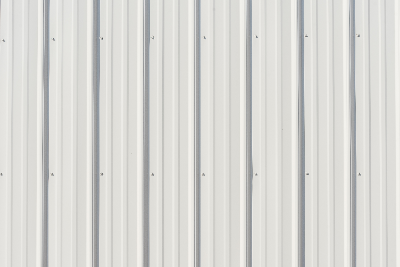What Are Siding Materials?
 Siding materials are materials applied to the exterior of a building to provide protection, as well as to enhance the buildings appearance.
Siding materials are materials applied to the exterior of a building to provide protection, as well as to enhance the buildings appearance.
Siding materials are characterized by the fact that they are easier and less expensive to install than other exterior wall materials. The characteristics and uses of siding material vary depending on the material used.
The main types are ceramic, metal, resin, and wood. There is a wide range of products to choose from, taking into consideration the design of the house and the environment.
Uses of Siding Materials
Siding material are used on the exterior walls of buildings such as homes, office buildings, and commercial facilities. The purpose is to cover the exterior walls and to make the appearance more visually appealing.
It also serves to protect the building from the outside air, rain, wind, and other natural elements. In addition, it improves the efficiency of heating and cooling and saves energy by enhancing thermal insulation.
Characteristics of Siding Material
Advantages
The first advantage of siding material is its durability. It does not deteriorate over time and requires less frequent repainting of exterior walls, which reduces maintenance labor and costs. In addition, its excellent fire resistance and thermal insulation properties reduce the risk of fire and increase energy efficiency.
Disadvantages
On the other hand, one of the disadvantages of siding material is its high price. It also requires specialized skills to install and tends to be expensive.
In addition, siding material is relatively heavy, so the load-bearing capacity of the structure must be considered. Some materials vary in durability and weather resistance, so it is important to consider the characteristics of the material and local climatic conditions when selecting a siding material.
Types of Siding Material
1. Ceramic Siding
Ceramic siding is made from clay, limestone, or sand, and is highly durable. Ceramic siding is available in a wide variety of colors and shapes, and has a high design quality. Special hardware is required for installation, and installation costs tend to be high. It is mainly used as a finishing material for exterior and interior walls.
2. Metal Siding
Metal siding is made of metals such as aluminum and stainless steel, and is lightweight and durable. Metal siding is often used as an exterior wall material for high-rise buildings and factories because of its superior durability and fire resistance.
It is available in a variety of colors and shapes, and has a simple, modern design. Special metal fittings are required for installation, and installation costs tend to be high.
3. Resin Siding
Resin siding is made of polyvinyl chloride (PVC), polypropylene (PP), or other resins and is lightweight and durable. Resin siding is also cost-effective because it requires no painting and is easy to maintain.
It is available in a wide variety of colors and shapes, and has excellent design characteristics. However, special metal fittings are required for installation, and installation costs tend to be high.
4. Wood Siding
Wood siding is made of natural or artificial wood and is characterized by its natural texture and beautiful wood grain. It also has excellent heat insulation and humidity control properties, as well as high sound insulation performance.
It is available in a variety of colors and shapes, and has excellent design with an emphasis on natural texture. However, it is inferior in durability and fire resistance, and requires maintenance, often requiring painting and preservative treatment.
How to Select Siding Material
When selecting a siding material, the following factors should be considered:
- Local climate conditions
- Durability
- Weather resistance
- Design
- Workability
- Price
Materials and ease of installation can be considered to make a more effective choice. Design and price are also important factors, and can be chosen according to budget and taste.
How to Use Siding Material
Siding material can be used to cover the exterior of a building to protect it and give it a pleasing appearance. Installation requires specialized skills, and it is important to select the appropriate installation method.
In addition, it is essential to check the load-bearing capacity and airtightness of the building before installation, and proper surface preparation is essential. After installation, regular maintenance will help maintain durability and aesthetics.